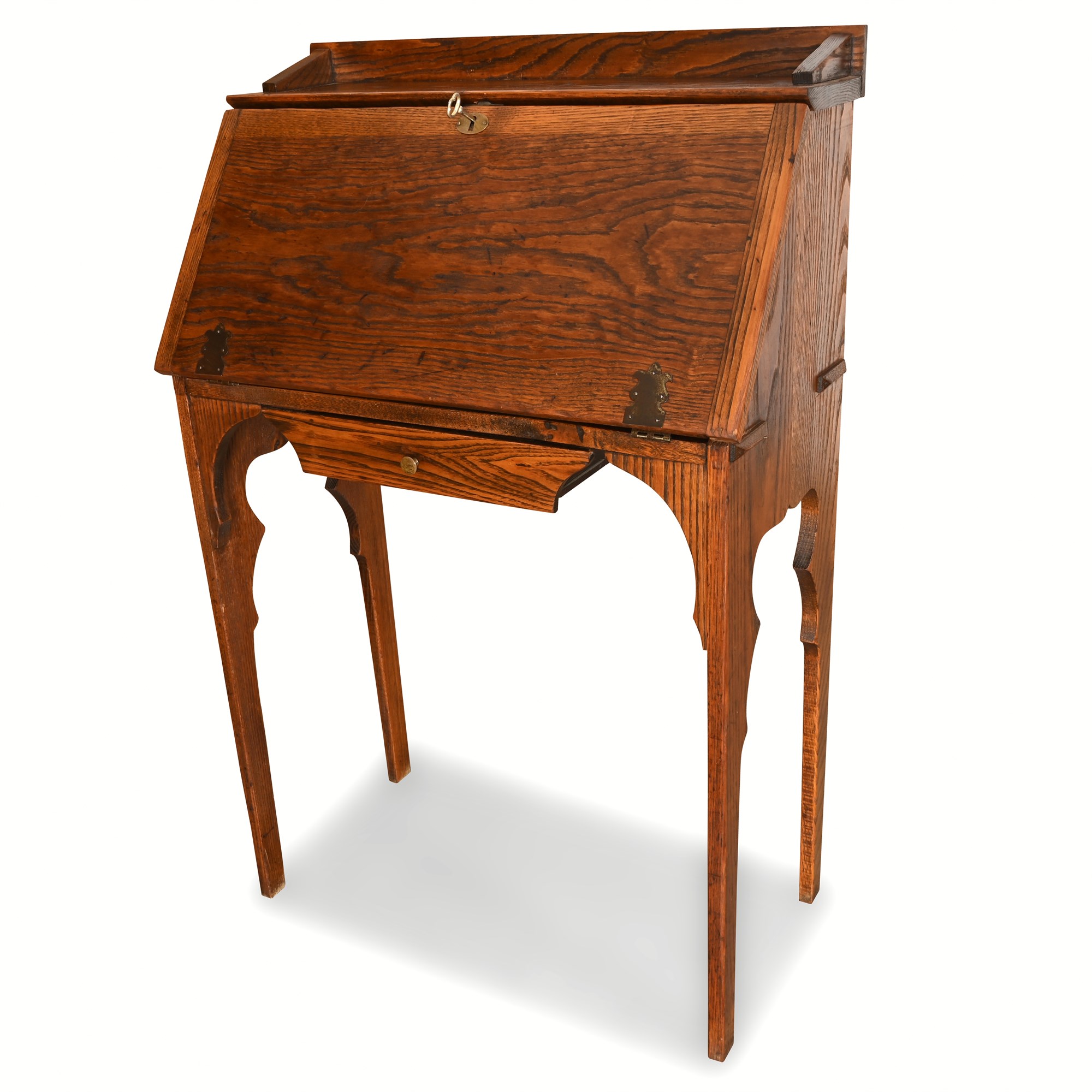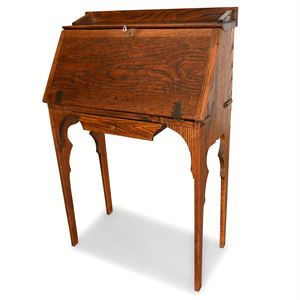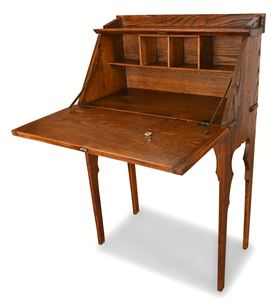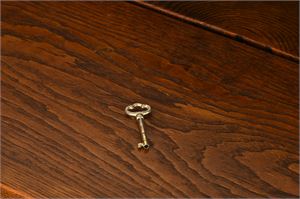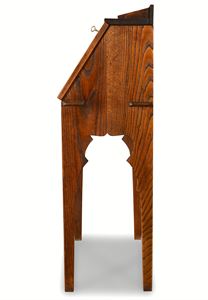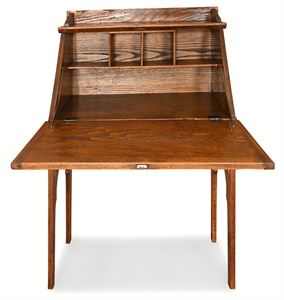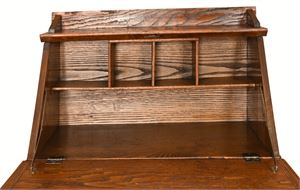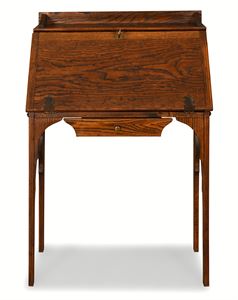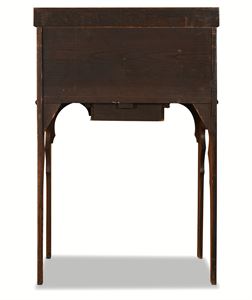Early 20th Century Mission Oak Drop-Front Writing Desk – Arts & Crafts Style, Wi View Watchlist >
- Winning Bid: $150.00
- 32 Bid(s) View Bid History
- High Bidder: sasgemini
Seller Accepts Credit Cards
Payment and pickup instructions will be available on your invoice (under "My Account") at the conclusion of this auction.
Lot # D569
System ID # 22044213
Start Date
End Date
2 Watching
Early 20th Century Mission Oak Drop-Front Writing Desk – Arts & Crafts Style, With Key
This solid oak drop-front writing desk exemplifies the Mission or Arts & Crafts style, popular in the early 20th century. Crafted with clean lines and a focus on functionality, it features a drop-down writing surface revealing four divided compartments, ideal for organizing correspondence and stationery. Below, a single drawer offers additional storage. The desk includes a working lock accompanied by a vintage skeleton key.
While unmarked, the design and construction are reminiscent of pieces by notable manufacturers of the era, such as Stickley Brothers and L. & J.G. Stickley, known for their high-quality Mission-style furniture crafted from quarter-sawn oak and featuring minimal ornamentation .
Condition
The desk is in good condition, exhibiting wear consistent with its age. There is some surface scuffing, and it appears to have undergone previous restoration. A natural split is present on the drawer bottom, and a chipped rail causes the drawer to fall out easily when fully opened. Despite these issues, the desk remains sturdy, and the finish retains its rich, warm tone.
Dimensions
-
Overall: 40" H x 26.5" W x 13.5" D
-
Writing Surface Height: 27"
-
Knee Hole Clearance: 24" H x 22.5" W x 13" D
Historical Context
Mission-style furniture emerged in the late 19th century as part of the broader Arts & Crafts movement, which emphasized simplicity, handcrafted quality, and the use of natural materials. This style was a reaction against the ornate designs of the Victorian era and the mass production of the Industrial Revolution . Furniture makers like Gustav Stickley and the Stickley Brothers were instrumental in popularizing this aesthetic in the United States.
